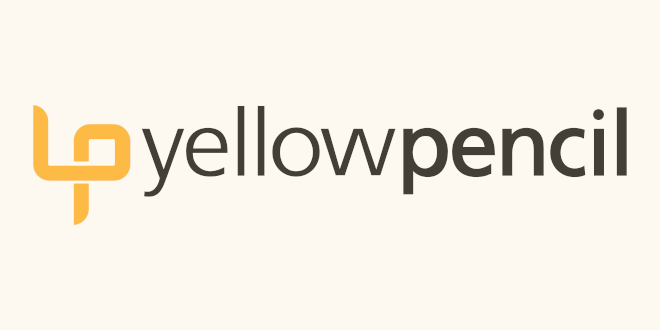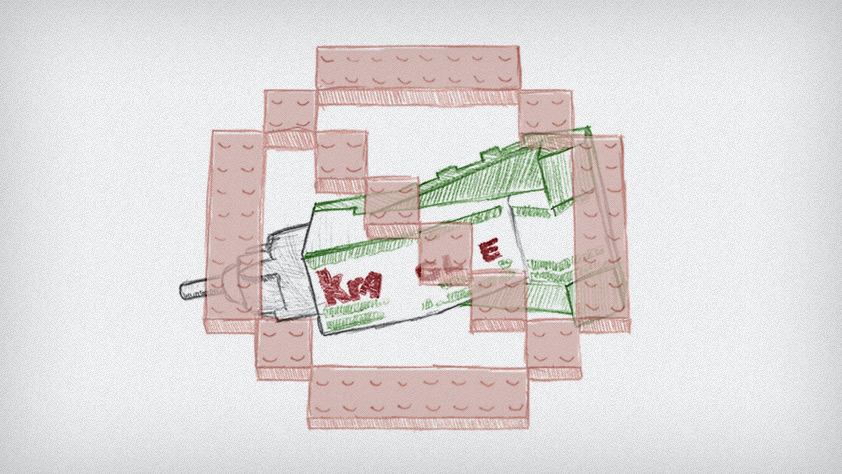
- Internet
- 27.02.2019
- EN
yellowpencil: Forsake the KRAGL - What the Lego movie taught me about designing for enterprise CMSs
A 6 minute read, written by Phil
March 11, 2014

I watched the Lego Movie on the weekend with our Lego obsessed 4-year-old; his very first trip to the movie theatre. It was the best movie I’ve seen in a long time and it paralleled some of the struggles we have designing for enterprise Content Management Systems (CMSs).
Here’s the basic premise of the movie (as spoiler free as possible):
The antagonist, President/Lord Business, wants everything to be perfect. He wants people to follow the instructions and to stop messing with his perfect universe or he will resort to the ultimate weapon if needed - Krazy Glue. The heroes resist his efforts and want to use their creativity to build anything they want, without constraints.
Just like our Lego heroes, we struggle to balance the need for a controlled environment and the need for flexibility in large scale Content Management Systems.
Striving for perfection

Like President Business, designers strive for perfection. We want to build websites and experiences that are user-focused, on-brand, and meet our clients’ present and future needs. We design systems that allow as much flexibility as possible, but still provide a consistent experience. We put lots of blood, sweat, and tears into our work, and we get pretty attached to it – sometimes a little too attached.
After we release our babies into the wild (launch the new site, that is), we sometimes see clients break the systems that we spent so much time and care to build. How? By not following image guidelines, adding new HTML elements, inline styling, inconsistent writing… each one a tiny pin prick into our creative hearts.
Clients tend to bend the rules or hack the CMS because something isn’t working for them. But this is a symptom of deeper problems. There are a number of reasons this might be happening: the business has new content requirements, there is a new marketing campaign, content authors need new types of templates or there is a gap in training.
It’s tempting to lock down the CMS to stop things like this from happening. Like gluing Lego blocks together to make sure everything stays perfect. And not (just) because we’re raging egomaniacs,

...but Krazy Glue is not the answer.
Sliding into chaos
Krazy Glue isn’t the right solution, but neither is chaos. When CMS-driven sites are left to their own devices, guidelines are ignored, and there’s too little structure in the CMS, you get Cloud Cookoo Land.
What is Cloud Cookoo Land?

Unikitty: Well, we have no rules here. There is no government, no bedtimes, no baby-sitters, no frowny faces, no bushy mustaches, and no negativity of any kind,”
Wildstyle: You just said the word no, like, a thousand times.”
Unikitty: And there’s also NO consistency.”
Cloud Cookoo Land sounds like paradise to some – a flexible CMS that allows them to add any type of content, any way they like. No need for rules or guidelines, just pure creativity. In reality this is a nightmare.
Without rules, structure or guidelines it is impossible to maintain a consistent, easy to navigate, usable web site that helps customers find what they are looking for and businesses achieve their goals.

Without rules and guidelines you can end up with things that look and seem like they would be a good idea but in reality are completely unusable, like Emmet’s “double decker couch so everyone could watch TV together and be buddies”. (would you want to watch tv through a bunch of dangling legs or climb up into the top middle spot?)
Bridging the extremes

We’ve seen what happens at the extremes, so how do we move forward? There are two main things that will ensure long term success of a web project.
- We need to understand our clients’ business, and build a flexible system that addresses their business and customer needs.
- We need to provide the training and resources to help their website grow as their organization changes.
The first comes from an in-depth discovery, design, and development process. We need to understand our client’s goals, audience, content, internal structures and processes, and long-term vision. Then we can work collaboratively to design and build a CMS-driven site that delivers a consistent experience across devices and screen sizes.
The next step is providing a client with the resources and training that allows them to use their CMS effectively. We train content authors on the technical aspects of the CMS so they can use their tools effectively. We also teach them how to write great web content so they can make the most of their CMS.
We also need to provide clients with resources that lets them to grow the site and ensure long term success. This usually comes in the form of a web style guide and a voice and tone guide. They help other writers, designers, and developers stay consistent with the structure and systems we’ve already established.
The voice and tone guide describes the brand personality. It shows how to create content in the brand voice and how to adopt the brand tone for different situations. This helps all content authors write with a unified voice and ensures consistent content throughout the site.
The visual equivalent is the web style guide, which provides a visual reference for the user interface design of the site. The style guide describes the user interface components, shows how they should look, where they should be used and include instructions on how to add them to a page.
Now we have a website that is well designed, flexible and meets the clients needs and that the client can manage and maintain the site moving forward.
So, we’re done now, right?
Launch Day - not so much an end as a new beginning

The last piece of the puzzle requires both clients and agencies to change their mindset about web projects. We treat launch day like the big event. We cut the ceremonial ribbon and have a party and go our merry ways.
Let’s enjoy that party, pat ourselves on the back on a job well done and realize there is still lots of work ahead of us. We need to think of launch day as step one in a long-term ongoing support and maintenance project.
We need to monitor analytics and metrics to see if the site working the way it should. Are the business goals being met? Can we identify content that is particularly engaging or effective? Content that needs some help? Which content is being visited, shared, or commented on?
We also need to review functionality. Is there functionality that didn’t make it into phase one that we can now plan for and add? Can we develop a roadmap for the site that includes additional functionality or integration with other tools and systems?
It’s also valuable to revisit the templates after three or six months to make sure they still meet the clients needs. We need to meet with the content authors to see if we can improve the CMS author interface, add contextual help, revise training materials or run additional training workshops to help them be even more successful.
The launch of a site really is a new beginning. With the heavy lifting done, we can put away the Krazy Glue and focus on measuring effectiveness, incremental improvements, and creating a roadmap to ensure that our clients really achieve long term success and avoid the slide towards Cloud Cookoo Land.

Now go see the movie for yourself and see how everything truly can be awesome!
Source: Forsake the KRAGL - What the Lego movie taught me about designing for enterprise CMSs
© copyright 2014 by yellowpencil